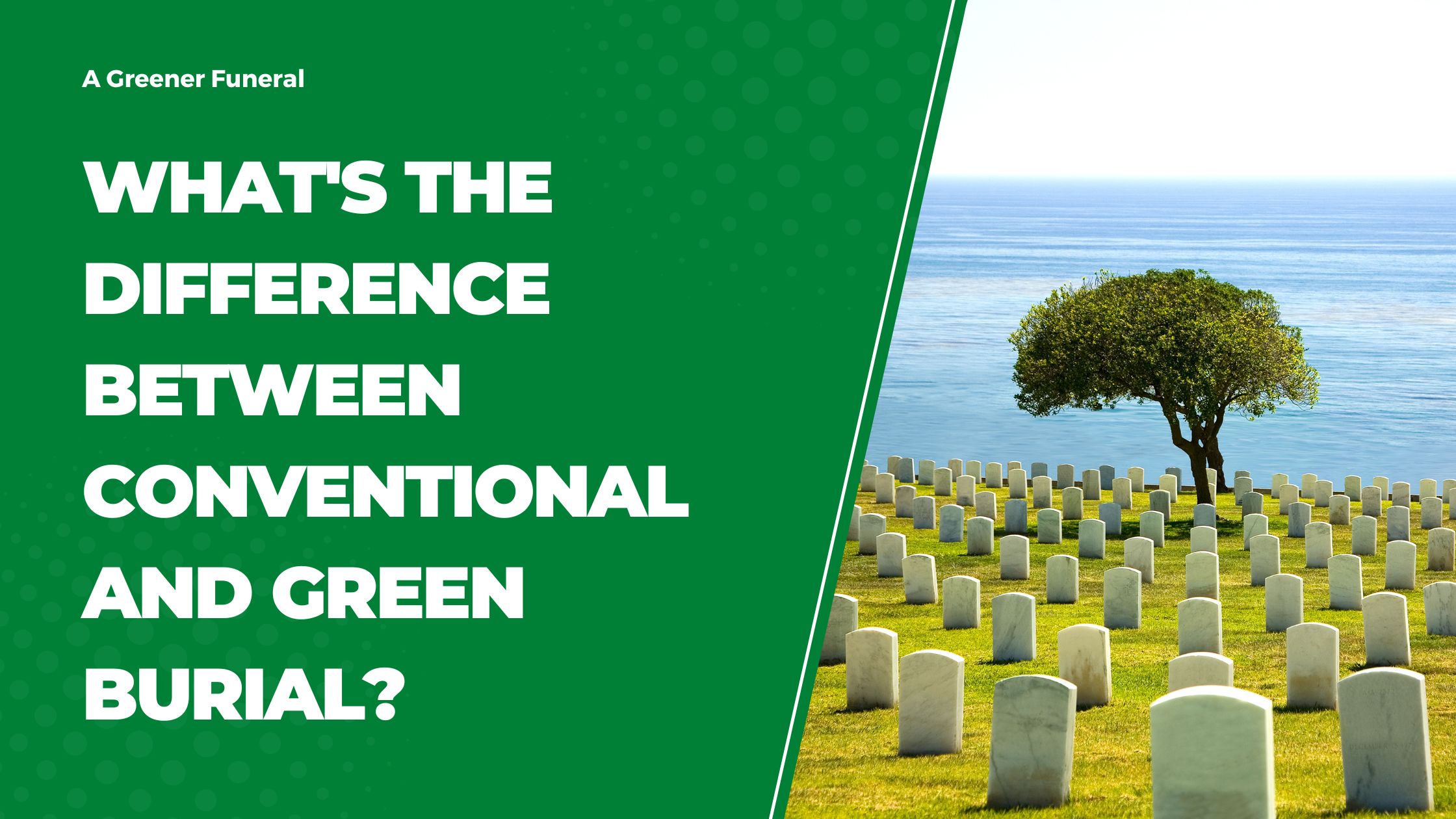Conventional vs. Green Burial: What’s the Difference?

What is Green Burial?
Green burials aim to minimize the environmental impact of a funeral by removing anything seen as unnecessary or excessive. Green burials use simple burial shrouds or caskets made from renewable, biodegradable materials instead of the more ornate traditional hardwood or metal caskets, and avoid the use of toxic chemicals like embalming fluid. Green burials generally are not allowed in traditional cemeteries for landscaping or other reasons, and instead occur in green cemeteries, hybrid cemeteries, or natural burial grounds that are managed to protect biodiversity and prevent pollution.
Why Choose Green Burial:
Green burials are an eco-friendly practice that allows the body to naturally decompose without harming the environment. Green burials allow the body to return to the earth most naturally while reducing one’s carbon footprint. Green burials optimize renewable materials, diminish the use of harsh chemicals, and reduce the negative environmental effects, creating a representation of the life lived. It allows families an easier way to approach the funeral and brings people together to celebrate the life of their loved one.
Advantages of Green Burial:
-
- Reduce your Carbon Footprint
- By choosing to go green, you are improving the air quality and reducing toxic pollutants that fill the air. This will help mitigate global warming.
- Leave a Legacy
- Budget Friendly
- The average cost of a traditional funeral is between $7,000- $10,000, while the average cost of a green funeral is substantially lower at around $2,000 – $4,000 dollars. This is because most of the high costs associated with a traditional funeral including embalming, ornate caskets, or concrete vaults, are all removed with a green funeral.
- Offers More Personalization
- A memorial service that aligns with the person’s core values and the life they lived.
- More Family Involvement in the Process
- In green burials, families may help dig the grave by hand, shroud the body themselves, and are generally more involved which leads to a better sense of closure and eases the grieving process for many families.
- Reduce your Carbon Footprint
What is a Conventional Burial:
A typical conventional or “traditional” burial takes place in a traditional cemetery that requires a grave liner and a vault or outer burial container (as cemetery policy, not as a legal requirement). Usually, the body must be chemically embalmed. The required use of a grave liner is usually for landscaping concerns, and the landscaping itself may be resource intensive, include high water usage for non-native vegetation, and involve the use of chemical pesticides and fertilizers.
Why Conventional Burial is No Longer Sustainable for the Environment:
Conventional burial preserves the body through a process called embalming. Embalming is used to reduce the rate of decay and was popularized during the American Civil War to transport fallen soldiers home. Today, embalming is mainly used for the family and friends of the deceased to have their final viewing and say goodbye. The process can have strong sentimental value behind it for families but requires the use of toxic chemicals such as formaldehyde, menthol, phenol, and glycerin that immensely harm the environment.
Conventional caskets are typically composed of wood, steel, copper, bronze, and other non-renewable resources. These precious resources could be better utilized elsewhere and provide no apparent value in a funeral since there are better alternatives offered. Each year, in the United States, we bury around 800,000 gallons of formaldehyde-based embalming fluid (about the volume of an Olympic-size swimming pool), 1,000 tons of casket steel, around 200,000 tons of concrete in burial vaults and bury enough wood to build 40 homes.
Moreover, conventional burial requires excessive consumption of valuable resources and fossil fuels for the manufacturing of grave products and cemetery upkeep. In addition, these resources will not naturally biodegrade and become one with Earth, like a Bamboo casket or Willow casket would.
In Conclusion:
Although traditional burial is still common, a large, growing percentage of the population prefers a more natural burial that aligns with their personal values and promotes the implementation of eco-friendly processes. In addition, families are able to create a forever-lasting, meaningful memory to hold close to their hearts infinitely. Overall, it represents a life full of pure love and allows the loved one to gracefully go while still holding true to what they believe in.
